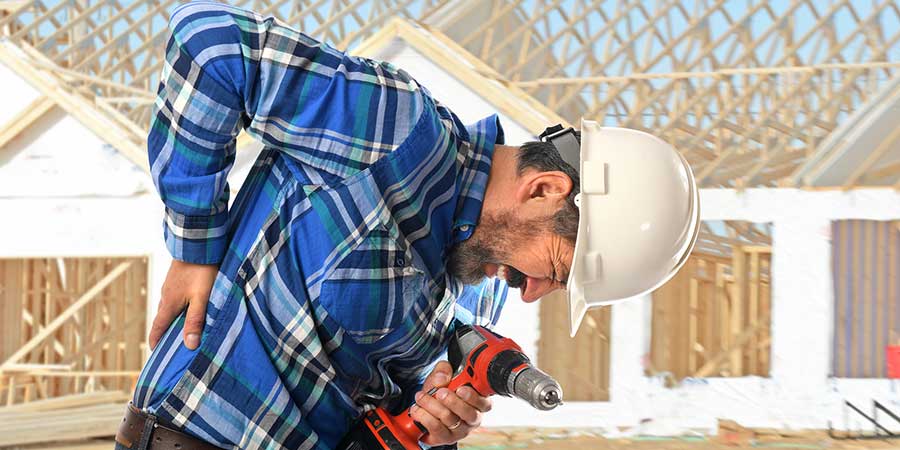How Construction Workers are Becoming the Face of the Opioid Epidemic
Amidst stay-at-home orders due to the COVID-19 pandemic, workers in several industries continued to show up to work each day to jobs deemed essential to the general public. Construction workers joined health care workers, grocery store employees, and post office workers in continuing to work during the beginning of the U.S. pandemic. The relentless pace of construction work puts many people in the industry at higher risk for opioid abuse.
A Dangerous Job
OSHA reports that nearly 6.5 million Americans work at approximately 252,000 construction sites across the USA daily. The construction industry has a higher fatal injury rate than all other sectors.
Some of the potentially fatal hazards include:
- Falls from high places
- Trench collapse
- Scaffold collapse
- Electric shock or arc flash/arc blast
- Repetitive motion injuries
- Failure to wear protective equipment.
Those who are lucky enough to survive a construction accident are often left with extremely painful conditions. Some of the riskier duties in construction sites are:
- Moving objects
- Working at heights
- Slips, trips, and falls
- Constant loud noise
- Hand and arm vibration
- Handling of material
- Working near trenches
- Touching asbestos
- Electrical work
- Airborne fibers and materials
The link between Construction Work and the Opioid Crisis
Before the COVID-19 pandemic, the United States was in the midst of an unprecedented public health crisis. Nearly 50,000 Americans died of an opioid-related overdose in 2018, a slight decrease from the prior year. Tens of thousands more continue to suffer from opioid abuse, and many never receive treatment.
Opioid abuse affects young and old, rich and poor, and people of all racial backgrounds. Yet certain groups of people are affected more than others. People with chronic pain are significantly more likely to develop an opioid use problem than the general population. That’s because physicians routinely prescribe powerful opiate painkillers for patients with chronic pain. At the peak of the opioid prescription problem, doctors provided 81.3 prescriptions per 100 people in the U.S., meaning more than 250 million prescriptions overall. Since the CDC made changes to its opioid prescribing guidelines, these rates have dropped. However, many people with chronic pain still depend on opioids for relief.
Perhaps no industry is affected by chronic pain as much as construction work. Construction workers are at higher risk for falls, back strain, knee and joint problems, and countless other chronic injuries. In one recent survey of New England construction workers, 75% reported that they had experienced musculoskeletal pain over the past three months. More than 40% said they had one or more work injuries in the past month. Construction workers face enormous pressure to continue working despite pain or injuries. As a result, many workers fight through pain or, worse, take painkillers while on the job.
From Prescription Opioids to Opioid Abuse
Data collected by state agencies show that construction workers are much more likely to die of an opioid overdose than other professions. In the Midwest, 962 construction workers died of opioid overdoses. In Massachusetts, about 25% of workers who died of an opioid overdose between 2011 and 2015 worked in construction. Ohio has also been impacted, with construction workers being seven times more likely to die of an overdose than other professions.
Construction workers on the front lines are often reluctant to speak up about the problem of addiction within their industry. Employees depend on working a certain number of hours — and often working overtime for additional pay — to make ends meet and staying home because of pain or injury results in valuable lost wages. Making the problem worse, many construction companies do not have paid sick leave policies. Workers feel obligated to continue to come to work, even when in pain, to avoid being penalized. They may also face pressure from their peers not to complain or seem like they are trying to get out of work.
To cope with their chronic pain issues, many construction workers turn to painkilling medications. While over-the-counter drugs like aspirin or ibuprofen can dull the pain, some people feel that they need more reliable solutions. They turn to their doctors to get prescription painkillers or simply buy them on the black market, often from friends or coworkers. While the prescription opioids initially help with the pain, they do not solve the underlying medical problem (usually a muscle strain or other physical issue). Plus, taking opioids over a long period leads to physiological dependence. Faced with increasing tolerance, many construction workers turn to more potent opioids like heroin or fentanyl to get a more substantial effect. Workers may also experience opioid-induced hyperalgesia. Hyperalgesia is a known condition, often misdiagnosed, in which people taking opioids become even more sensitive to pain.
To make things worse, construction workers also have very high rates of mental health problems. One study found that approximately 1 in 6 workers reported psychological distress. Depression, panic disorder, and generalized anxiety disorder were the most common problems. Furthermore, mental health issues can worsen pain and increase the risk of substance use. People may begin taking opioids to dull mental and emotional distress as well as physical pain. While this can mask issues in the short term, it does not address the underlying causes of psychological suffering.
Industry insiders say this is an open secret in construction work: everyone knows someone who is abusing painkillers. Yet major construction companies fail to speak out about the issue. Worse, there is no systematic program to identify and treat substance abuse among construction workers. Nor are there adequate workplace protections to prevent injury and chronic pain in this vulnerable group of people.
A Path Forward: Treatment for Opioid Addiction
As a society, we depend on construction workers to keep our roads, buildings, and other infrastructure in good working condition. It is a national tragedy that these workers resort to using addictive medications to cope with pain from their injuries. We need a better plan to address opioid dependence and addiction among construction workers.
First, construction workplaces must meet high standards for workplace safety. Reducing accidents and repetitive use injuries is an essential step in preventing chronic pain. Offering paid sick leave, short-term disability pay, and other benefits are also necessary to allow people to recover from injuries. Construction companies should also educate workers about non-opioid methods of pain relief, including anti-inflammatory medications, and physical therapy.
Next, we need increased access to opioid detoxification programs that work. Medically-assisted detox programs clear opioids from the body in a safe, supportive hospital environment. This type of treatment allows the body to “reset” to an opioid-free state, while physicians manage withdrawal symptoms and vitals. Once an opioid detox is complete, the person can participate in mental health treatment or physical therapy to address the root causes of addiction. Without access to these types of medical solutions, construction workers are likely to continue suffering from opioid addiction.



















